Delacroix, ever the Romantic
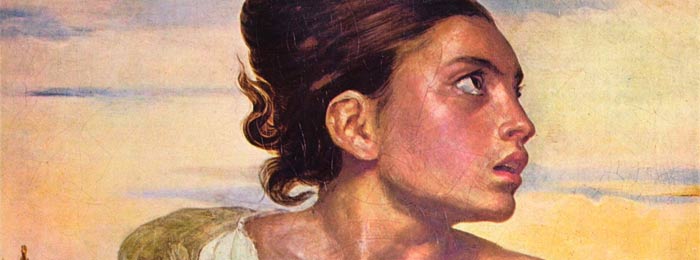
Article by Jimena Escoto
The nineteenth century was a period of constant change, revolutions, wars, endings and new beginnings. These turbulent times affected artists who began to express themselves in more than one way. Indeed, when we study the 1800s art, we have at least four movements that really transcended and made an impact in the History of Art: Romanticism, Realism, Impressionism, and the origins of Cubism.
 In this article I want to talk about one of the greatest Romantic painters and possibly one of the last Old Masters, Eugène Delacroix.
In this article I want to talk about one of the greatest Romantic painters and possibly one of the last Old Masters, Eugène Delacroix.
Coming out of the French Revolution, artists began to feel restrained by the neoclassical rules. That is why they opted for a freer style of painting which they found following the literary movement led by Victor Hugo, Lord Byron, among others. With the adoption of Romanticism, painters gave preference to color rather than to drawing. Once more, images were full of movement, drama and passion.
Since his father was the Minister of Foreign Affairs during the Directory, he was always close to politicians and was interested in such matters. As a matter of fact, there were some doubts on whether Charles-Francois Delacroix was his biological father and not Talleyrand. Whether this was mere gossip or not will remain unknown; however, it is true that he received protection by Talleyrand after the Napoleonic age.
Although Delacroix started being educated in the neoclassical tradition, he quickly turned to the other side. The famous Raft of the Medusa by Géricault was the inspiration for his The Barque of Dante.
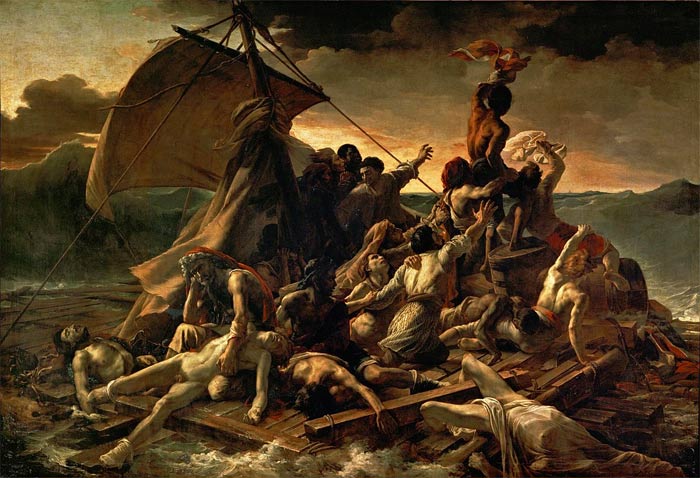
The Raft of the Medusa
Théodore Géricault
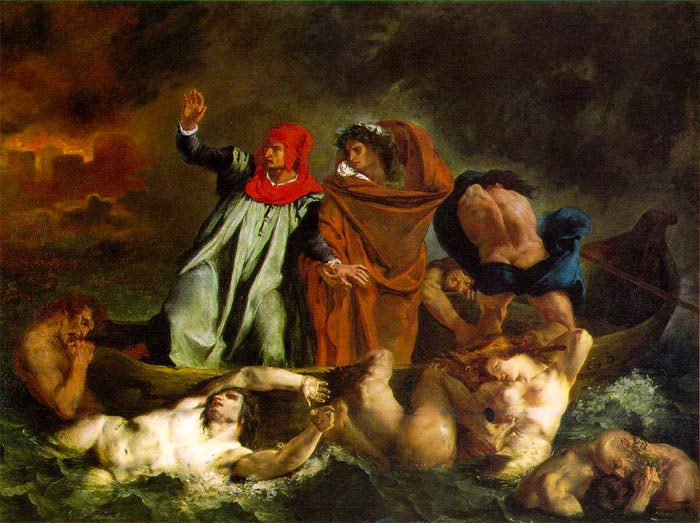
The Barque of Dante
Eugène Delacroix
In his composition, Delacroix illustrates a passage of the Canto VIII of Dante’s Divine Comedy. We can see Dante supported by Virgil as they navigate through the River Styx while a number of desperate souls are destabilizing the boat. Even though this is his first major artwork which is detached from neoclassical ideals, he manages to capture the expressions of the characters in agony.
During the years 1821 until 1830, Greece successfully fought for her independence from the Ottoman Turks. This was an event that Delacroix sympathized with since his own country was also trying acquire more liberties. With the acceptance of The Barque of Dante, Delacroix’s confidence grew and two years later, in 1824, he presented The Massacre at Chios.
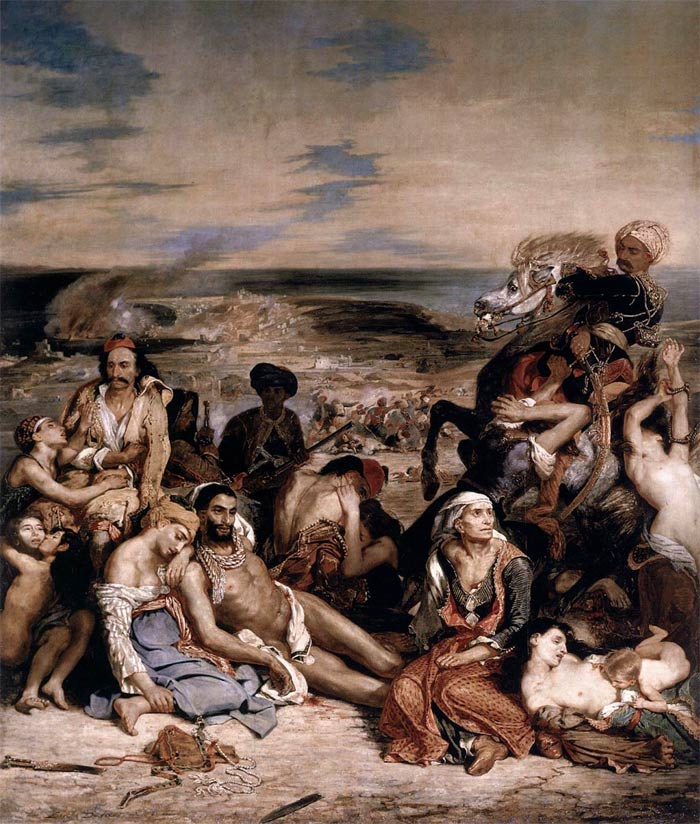
The scene depicts the moment when a group of weak Greeks are about to be slaughtered. Although his proposition earned a few negative commentaries, once more, the painting was greatly recognize granting him the title of leader of the Romantic Movement. Additionally to this, he created an allegory called Greece Expiring on the Ruins of Missolonghi. Like the Russians with Napoleon, the Greeks refused to give up their city and chose to destroy it themselves.
Furthermore, Delacroix showed his revolutionary convictions on his most famous paintings and perhaps one of the most important ones on history: La Liberté Guidant le Peuple or The Liberty guiding the people.

Contrary to popular belief, this was not painted during the French Revolution of 1789, by that time, Delacroix hadn’t even been born. This was made in 1830, right at the end of the Restoration. After Napoleon, the Bourbon dynasty returned and with it the censorship and the oppression too, causing the people to raise against their king one more time. Unfortunately, this uprising did little to nothing to improve the situation. Regardless of this, the painting became a symbol of liberty, even in our days. There are some who believe that the boy on the right with the gun inspired Victor Hugo to write the character of Gavroche in Les Misérables (curiously, this novel is also confused to be set during the 18th century events).
Delacroix is also well known for his paintings, drawings and sketches made during his time in Algiers. At the time, Europe was still expanding its influence upon the rest of the world bringing an interest to their people to learn about the new territories and its inhabitants. Even when some artists never left Europe, they embarked into a new movement called Orientalism. Not only painters, but sculptors, architects, decorators, musicians, and dancers. Orient was on vogue, even when its representation weren’t accurate at all. Women in Algiers in their apartment is a wonderful example of this new trend. Oppositely to his rival Ingres who painted the Grande Odalisque 20 years before objectifying the Oriental woman, Delacroix put on his canvas three women lavishly dressed in a quite decorated room, very true to a real image, accompanied by their black slave with no intention of eroticizing them.
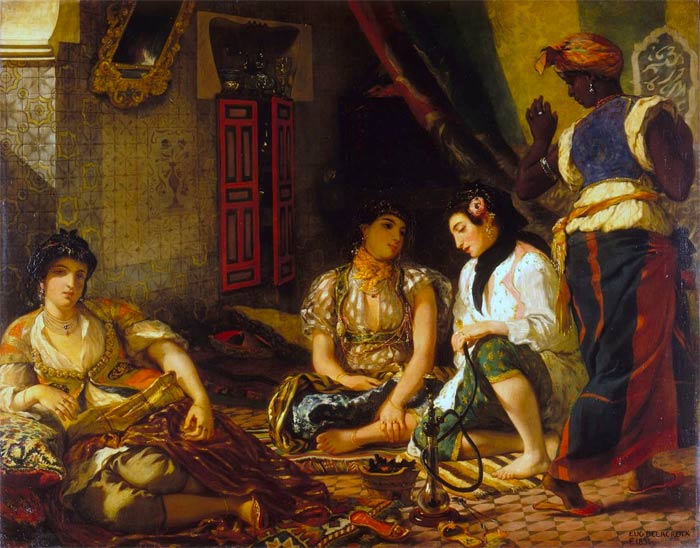
Eugène Delacroix earned his place in the History of Art for his amazing talent to make us feel what the characters are suffering on his canvas, for his ability to transport us to faraway lands, and for inspiring painters of many generations later.
To learn professional drawing techniques,
- Receive 15 new videos monthly (45 in total)
- Incredible discount – $4,164
- Bonuses - Fine Art eBooks and Videos
- Drawing Academy Diploma of Excellence after course completion in 3 months
- Personal coaching by Drawing Academy Tutors
- Lifetime membership. Free after the 3rd month
- Immediate access to all 45 video lessons
- Incredible discount – $4,198
- Bonuses - Fine Art eBooks and Videos
- Drawing Academy Diploma of Excellence after course completion in 3 months
- Personal coaching by Drawing Academy Tutors
- Lifetime membership. No more payments


This Post Has 0 Comments